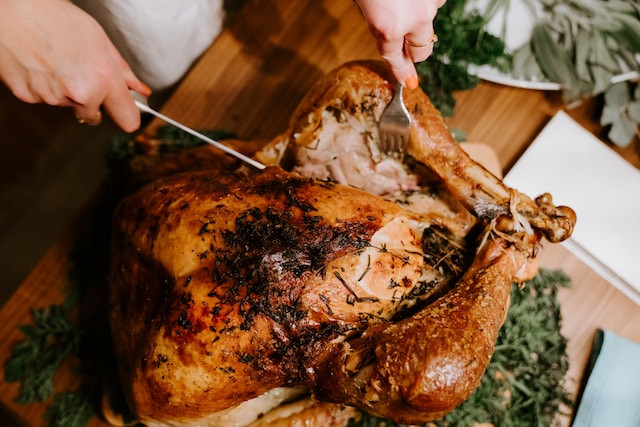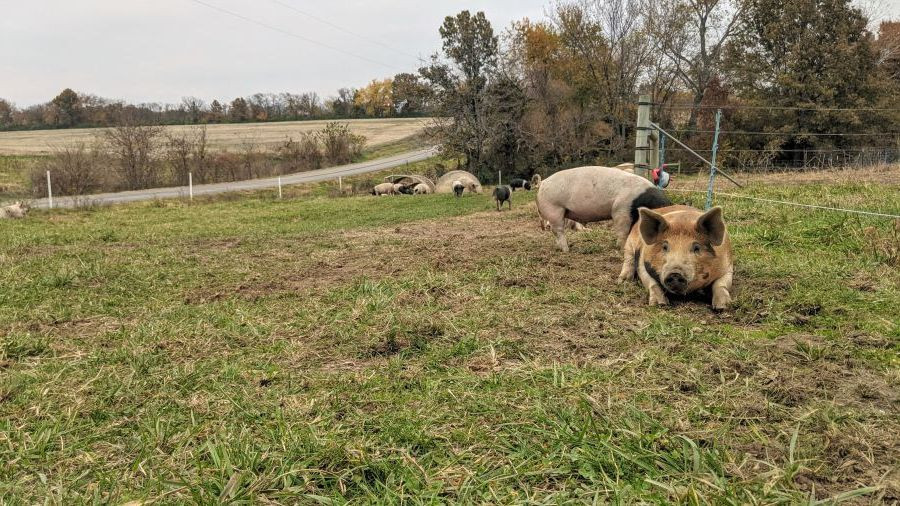Dos & Don'ts: Thanksgiving Turkey Edition
posted on
October 20, 2023

Thanksgiving is just around the corner, and you're probably gearing up to create a delicious and memorable feast for your family. The star of the show, of course, is the Thanksgiving Turkey.
Whether you're a seasoned pro or it's your first time tackling this culinary masterpiece, I've got you covered with the ultimate guide for preparing the perfect Thanksgiving turkey. In this article, I'll walk you through the dos and don'ts to make sure your turkey turns out mouthwatering-ly perfect.
The Do's
- Plan Ahead: Start by determining the size of the turkey you need for your gathering, about 1-1.5 pounds per person. Purchase your turkey well in advance to ensure you get the size you want.
- Thaw Safely: If you buy a frozen turkey, be sure to thaw it safely. The best method is to place it in the refrigerator on a pan, allowing 24 hours of thawing time for every 3-4 pounds of turkey. If you need to speed up the process, you can thaw your turkey in under 12 hours using this cold water method.
- Brine Your Turkey: Consider brining your turkey the day before to infuse it with flavor and ensure it stays moist. A simple brine of water, salt, sugar, and your favorite herbs and spices works wonders.
- Season Generously: Don't be shy with your seasoning. Rub your turkey inside and out with a mixture of your favorite herbs, spices, and olive oil or butter. This adds flavor and creates a crispy, flavorful skin.
- Use a Meat Thermometer: Invest in a good-quality meat thermometer to ensure your turkey reaches the safe internal temperature of 165°F (74°C). It helps avoid overcooking, which can lead to a dry turkey.
- Baste with Love: Basting your turkey with its own juices or a flavorful broth every 30 minutes helps keep it moist and adds extra layers of taste. But remember, every time you open the oven door, you let heat escape, so do it quickly and efficiently.
- Let it Rest: After taking your turkey out of the oven, let it rest for at least 20-30 minutes before carving. This allows the juices to redistribute, ensuring a juicy, tender bird. (You also want to avoid burning your hands!)
- Carve with Care: Carve your turkey against the grain to maximize tenderness. Use a sharp knife, and don't forget to save the leftovers for delicious turkey sandwiches!
The Don'ts
- Don't Forget to Thaw: Set an alarm or calendar reminder to begin thawing for 3-4 days in advance. It's not recommended to cook a frozen turkey. Thaw it completely before roasting, as it will cook unevenly if it's still frozen inside. If you are in a hurry, use this cold water method.
- Avoid Overcrowding the Oven: Cooking side dishes in the same oven as your turkey can lead to uneven cooking. If you must, stagger cooking times, but it's best to use a separate oven or cook some dishes in advance.
- Don't Skip the Meat Thermometer: Guessing when your turkey is done is risky. Avoid cutting into the turkey to check its doneness, as this will release precious juices and could dry out the meat.
- Refrain from Peeking Too Much: While it's tempting to check on your turkey, avoid opening the oven door frequently. This causes temperature fluctuations and extends the cooking time.
- Avoid Overcooking: Cooking your turkey too long can lead to a dry, flavorless bird. Trust your meat thermometer, and when it reaches 165°F (74°C), it's time to take it out.
- Don't Forget to Rest: Skipping the resting period can lead to a dry turkey. Be patient and let the turkey rest to allow the juices to reabsorb into the meat.
- Resist the Urge to Rush: Thanksgiving is a special occasion, so take your time and enjoy the process of cooking the perfect turkey. Rushing can lead to mistakes and disappointment.
- Don't Forget to Show-off: You've worked tediously to prepare this beautiful centerpiece for your Thanksgiving table. Remember to snap a picture before cutting in. Post it and tag us @davidspasture, along with the doubters who said you couldn't pull it off.
Preparing a Thanksgiving turkey can be a labor of love, and following these do's and don'ts will help ensure that your bird is the highlight of the party. Remember to plan ahead, take your time, and enjoy the process. With these tips, your Thanksgiving turkey will be a masterpiece that your family and friends will remember for years to come. Happy Thanksgiving!



